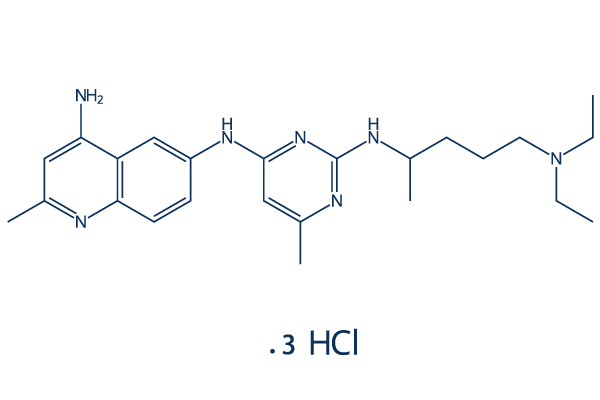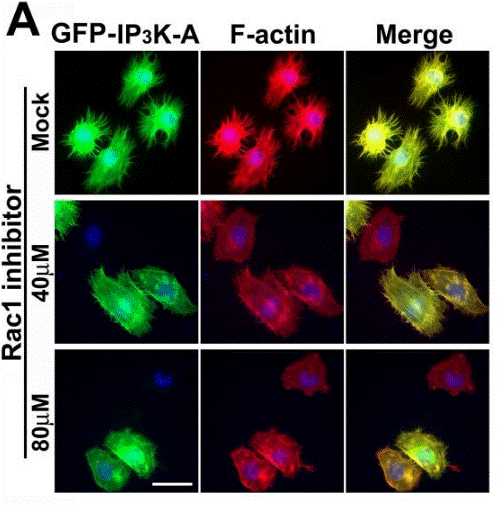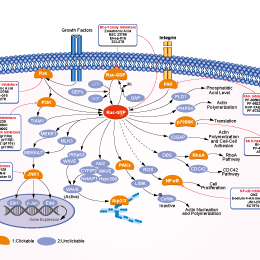
- 阻害剤
- 研究分野別
- PI3K/Akt/mTOR
- Epigenetics
- Methylation
- Immunology & Inflammation
- Protein Tyrosine Kinase
- Angiogenesis
- Apoptosis
- Autophagy
- ER stress & UPR
- JAK/STAT
- MAPK
- Cytoskeletal Signaling
- Cell Cycle
- TGF-beta/Smad
- 化合物ライブラリー
- Popular Compound Libraries
- Customize Library
- Clinical and FDA-approved Related
- Bioactive Compound Libraries
- Inhibitor Related
- Natural Product Related
- Metabolism Related
- Cell Death Related
- By Signaling Pathway
- By Disease
- Anti-infection and Antiviral Related
- Neuronal and Immunology Related
- Fragment and Covalent Related
- FDA-approved Drug Library
- FDA-approved & Passed Phase I Drug Library
- Preclinical/Clinical Compound Library
- Bioactive Compound Library-I
- Bioactive Compound Library-II
- Kinase Inhibitor Library
- Express-Pick Library
- Natural Product Library
- Human Endogenous Metabolite Compound Library
- Alkaloid Compound LibraryNew
- Angiogenesis Related compound Library
- Anti-Aging Compound Library
- Anti-alzheimer Disease Compound Library
- Antibiotics compound Library
- Anti-cancer Compound Library
- Anti-cancer Compound Library-Ⅱ
- Anti-cancer Metabolism Compound Library
- Anti-Cardiovascular Disease Compound Library
- Anti-diabetic Compound Library
- Anti-infection Compound Library
- Antioxidant Compound Library
- Anti-parasitic Compound Library
- Antiviral Compound Library
- Apoptosis Compound Library
- Autophagy Compound Library
- Calcium Channel Blocker LibraryNew
- Cambridge Cancer Compound Library
- Carbohydrate Metabolism Compound LibraryNew
- Cell Cycle compound library
- CNS-Penetrant Compound Library
- Covalent Inhibitor Library
- Cytokine Inhibitor LibraryNew
- Cytoskeletal Signaling Pathway Compound Library
- DNA Damage/DNA Repair compound Library
- Drug-like Compound Library
- Endoplasmic Reticulum Stress Compound Library
- Epigenetics Compound Library
- Exosome Secretion Related Compound LibraryNew
- FDA-approved Anticancer Drug LibraryNew
- Ferroptosis Compound Library
- Flavonoid Compound Library
- Fragment Library
- Glutamine Metabolism Compound Library
- Glycolysis Compound Library
- GPCR Compound Library
- Gut Microbial Metabolite Library
- HIF-1 Signaling Pathway Compound Library
- Highly Selective Inhibitor Library
- Histone modification compound library
- HTS Library for Drug Discovery
- Human Hormone Related Compound LibraryNew
- Human Transcription Factor Compound LibraryNew
- Immunology/Inflammation Compound Library
- Inhibitor Library
- Ion Channel Ligand Library
- JAK/STAT compound library
- Lipid Metabolism Compound LibraryNew
- Macrocyclic Compound Library
- MAPK Inhibitor Library
- Medicine Food Homology Compound Library
- Metabolism Compound Library
- Methylation Compound Library
- Mouse Metabolite Compound LibraryNew
- Natural Organic Compound Library
- Neuronal Signaling Compound Library
- NF-κB Signaling Compound Library
- Nucleoside Analogue Library
- Obesity Compound Library
- Oxidative Stress Compound LibraryNew
- Phenotypic Screening Library
- PI3K/Akt Inhibitor Library
- Protease Inhibitor Library
- Protein-protein Interaction Inhibitor Library
- Pyroptosis Compound Library
- Small Molecule Immuno-Oncology Compound Library
- Mitochondria-Targeted Compound LibraryNew
- Stem Cell Differentiation Compound LibraryNew
- Stem Cell Signaling Compound Library
- Natural Phenol Compound LibraryNew
- Natural Terpenoid Compound LibraryNew
- TGF-beta/Smad compound library
- Traditional Chinese Medicine Library
- Tyrosine Kinase Inhibitor Library
- Ubiquitination Compound Library
-
Cherry Picking
You can personalize your library with chemicals from within Selleck's inventory. Build the right library for your research endeavors by choosing from compounds in all of our available libraries.
Please contact us at info@selleck.co.jp to customize your library.
You could select:
- 抗体
- 新製品
- お問い合わせ
NSC 23766 trihydrochloride
NSC 23766 trihydrochloride is an inhibitor of Rac GTPase targeting Rac activation by guanine nucleotide exchange factors (GEFs) with IC50 of ~50 μM in a cell-free assay; does not inhibit the closely related targets, Cdc42 or RhoA.

CAS No. 1177865-17-6
文献中Selleckの製品使用例(107)
製品安全説明書
現在のバッチを見る:
純度:
99.96%
99.96
NSC 23766 trihydrochloride関連製品
シグナル伝達経路
Rho阻害剤の選択性比較
Cell Data
| Cell Lines | Assay Type | Concentration | Incubation Time | 活性情報 | PMID |
|---|---|---|---|---|---|
| A431 | Growth Inhibition Assay | 100 μM | 24/48/72 h | inhibits cell growth in a time dependent manner | 25109327 |
| RBMECs | Function Assay | 100 μM | 30 min | blockes 6Bnz-cAMP-mediated activation of Rac1 in EMAP-II-treated RBMECs | 26358039 |
| U2-OS | Growth Inhibition Assay | 100 μM | 24/48/72 h | inhibits cell growth in a time dependent manner | 25109327 |
| SW480 | Growth Inhibition Assay | 100 μM | 24/48/72 h | inhibits cell growth in a time dependent manner | 25109327 |
| A431 | Function Assay | 100 μM | 24 h | induces cell cycle arrest in the G1 phase | 25109327 |
| U2-OS | Function Assay | 100 μM | 24 h | induces cell cycle arrest in the G1 phase | 25109327 |
| SW480 | Function Assay | 100 μM | 24 h | induces cell cycle arrest in the G1 phase | 25109327 |
| Ki-67+ CLL | Growth Inhibition Assay | 50 µM | 5 d | decreases the number of Ki-67+ CLL cells | 24501217 |
| NIH3T3 | Growth Inhibition Assay | 100 μM | 24 h | has no significant impact on cell viability | 25037060 |
| U87MG | Cell Viability Assay | 50 mM | 144 h | exhibits synergistic antiproliferative effects combined treatment with erlotinib | 23832120 |
| A172MG | Cell Viability Assay | 50 mM | 144 h | exhibits synergistic antiproliferative effects combined treatment with erlotinib | 23832120 |
| T98MG | Cell Viability Assay | 50 mM | 144 h | exhibits synergistic antiproliferative effects combined treatment with erlotinib | 23832120 |
| PC38 | Cell Viability Assay | 50 mM | 144 h | exhibits synergistic antiproliferative effects combined treatment with erlotinib | 23832120 |
| U87MG | Function Assay | 50 mM | 24 h | enhances the antimigratory effect of erlotinib | 23832120 |
| PC40 | Cell Viability Assay | 50 mM | 144 h | exhibits synergistic antiproliferative effects combined treatment with erlotinib | 23832120 |
| T98MG | Function Assay | 50 mM | 24 h | enhances the antimigratory effect of erlotinib | 23832120 |
| A172MG | Function Assay | 50 mM | 24 h | enhances the antimigratory effect of erlotinib | 23832120 |
| NCI-H1703 | Growth Inhibition Assay | 0-500 μM | 24 h | inhibits cell growth in a dose dependent manner | 22549160 |
| NCI-H1703 | Function Assay | 100 μg/ml | 24 h | slows progression through the G1 phase of the cell cycle | 22549160 |
| NCI-H1703 | Function Assay | 0-500 μM | 24 h | diminishes basal NF-κB activity dose dependently | 22549160 |
| SKBR3 | Function Assay | 50 μM | 24 h | inhibits Rac1 activation | 21943825 |
| SKBR3-pMKO.1 | Function Assay | 50 μM | 24 h | inhibits Rac1 activation | 21943825 |
| MCF7 | Cytotoxicity Assay | 0-100 μM | 48 h | decreases cell viability in a dose dependent manner | 20515940 |
| T47D | Cytotoxicity Assay | 0-100 μM | 48 h | decreases cell viability in a dose dependent manner | 20515940 |
| MDA-MB-468 | Cytotoxicity Assay | 0-100 μM | 48 h | decreases cell viability in a dose dependent manner | 20515940 |
| MDA-MB-231 | Cytotoxicity Assay | 0-100 μM | 48 h | decreases cell viability in a dose dependent manner | 20515940 |
| MDA-MB-231 | Function Assay | 0-100 μM | 24 h | selectively inhibits Rac1 activation without interfering with the activity of the closely related small GTPase Cdc42 | 20515940 |
| MDA-MB-231 | Function Assay | 100 μM | 48 h | increases the cell number in G1 phase and decreases the cell number in S and G2-M phases | 20515940 |
| MCF7 | Function Assay | 100 μM | 48 h | increases the cell number in G1 phase and decreases the cell number in S and G2-M phases | 20515940 |
| MDA-MB-468 | Apoptosis Assay | 50/100 μM | 24 h | induces apoptosis | 20515940 |
| T47D | Function Assay | 100 μM | 48 h | increases the cell number in G1 phase and decreases the cell number in S and G2-M phases | 20515940 |
| MDA-MB-468 | Function Assay | 100 μM | 24 h | inhibits caspase-3 activation | 20515940 |
| MDA-MB-468 | Function Assay | 50/100 μM | 24 h | increases phosphorylation of JNK in a dose dependent manner | 20515940 |
| MDA-MB-231 | Function Assay | 50/100 μM | 24 h | increases phosphorylation of JNK in a dose dependent manner | 20515940 |
| MDA-MB-468 | Function Assay | 50/100 μM | 48 h | induces a dose-dependent decrease in phosphorylation of p65 subunit | 20515940 |
| MDA-MB-231 | Function Assay | 50/100 μM | 48 h | induces a dose-dependent decrease in phosphorylation of p65 subunit | 20515940 |
| IEC-6 | Function Assay | 120 µM | 4/6/8 h | prevents the increased activation of FAK at 6 and 8 h | 20448461 |
| RA1 | Function Assay | 50 μM | 24 h | inhibits Matrigel invasion | 17622308 |
| RA-FLS (RA2) | Growth Inhibition Assay | 25/50 μM | 1-9 d | inhibits cell growth in both dose and time dependent manner | 17622308 |
| RA2 | Function Assay | 50 μM | 24 h | inhibits Matrigel invasion | 17622308 |
| RA4 | Function Assay | 50 μM | 24 h | inhibits Matrigel invasion | 17622308 |
| RA3 | Function Assay | 50 μM | 24 h | inhibits Matrigel invasion | 17622308 |
| human aortic smooth muscle cells | Function Assay | 50 uM | Inhibition of Rac1 binding to Pak1 in human aortic smooth muscle cells at 50 uM by SDS-PAGE based chemiluminescence | 19527032 | |
| human aortic smooth muscle cells | Function Assay | 100 μM | Inhibition of Rac1 binding to Pak1 in human aortic smooth muscle cells at 100 uM by SDS-PAGE based chemiluminescence | 19527032 | |
| 他の多くの細胞株試験データをご覧になる場合はこちらをクリックして下さい | |||||
生物活性
| 製品説明 | NSC 23766 trihydrochloride is an inhibitor of Rac GTPase targeting Rac activation by guanine nucleotide exchange factors (GEFs) with IC50 of ~50 μM in a cell-free assay; does not inhibit the closely related targets, Cdc42 or RhoA. | ||
|---|---|---|---|
| Targets |
|
| In Vitro | ||||
| In vitro |
NSC23766 is identified to fit into a surface groove of Rac1 known to be critical for GEF specification. NSC23766 effectively inhibits Rac1 binding and activation by the Rac-specific GEF Trio or Tiam1 in a dose-dependent manner without interfering with the closely related Cdc42 or RhoA binding or activation by their respective GEFs or with Rac1 interaction with BcrGAP or effector PAK1. [1] NSC 23766 is active in regulating Rac GTPase functions on cytoskeleton and many cell functions including cell cycle, cell growth, adhesion, migration and gene transcription. NSC 23766 (50 μM) potently blocks serum or platelet-derived growth factor-induced Rac1 activation and lamellipodia formation without affecting the activity of endogenous Cdc42 or RhoA in NIH 3T3 cells. NSC 23766 reduces Trio or Tiam1 but not Vav, Lbc, Intersectin, or a constitutively active Rac1 mutant-stimulated NIH 3T3 cells growth and suppresses Trio, Tiam1, or Ras-induced cell transformation. NSC23766 dose-dependently inhibits PC-3 cells proliferation and anchorage-independent growth. 25 μM NSC23766 inhibits the PC-3 cell invasion through Matrigel by 85%. [1] 50 μM NSC 23766 inhibits thrombin-induced activation of Rac1 an d Rac2 in human platelets, as well as platelet aggregation. [2] NSC23766 prevents Aβ40 and Aβ42 production in swAPP-HEK293cells without affecting Notch and sAPPα. NSC23766 prevents γ-secretase activity in cell, but not act as a direct γ-secretase inhibitor. NSC23766 dose-dependently reduces levels of secreted and intracellular Aβ40 with IC50 of 48.94 μM. 50 μM NSC 23766 inhibits release of Aβ42 by 57.97%. [3] NSC23766 regulates endothelial nitric oxide synthase expression and endothelial function. 100 μM NSC23766 represses the eNOS promoter activity by 60% in bovine aortic ECs and by 30% to 35% in bEND.3 cells. Inhibition of Rac1 with NSC23766 destabilizes eNOS mRNA and shortens its half-life to 17 hours. NSC23766 dose-dependently attenuates ACh-induced relaxation of wild-type mice aortic rings. [4] NSC23766 inhibits cell growth and induces apoptosis. NSC23766 decreases MDA-MB-468 and MDA-MB-231 cells viability in a dose-dependent manner with IC50 of ~10 μM, which is not correlated with the status of estrogen receptor (ER), progesterone receptor (PR), Her2, and p53 mutation. NSC23766 has little effect on the survival of the MCF12A normal mammary epithelial cells. After 24 hours expose to NSC 23766, MDA-MB-231 cells showes an increase from 41% to 65% in G1 phase and a concomitant decrease in S and G2-M phases. 100 μM NSC23766 induces a six-fold increase of apoptotic MDA-MB-468. The inhibition of NSC23766 on cell cycle arrest or apoptosis in breast cancer cells is mediated by downregulation of cyclin D1, survivin, and X-linked inhibitor of protein apoptosis. [5] |
|||
|---|---|---|---|---|
| Kinase Assay | Rho GTPase activity assay | |||
| Cells are grown in log phase in a 10-cm dish, and are starved in 0.5% serum medium or indicated otherwise for 24 h before lysis in a buffer containing 20 mM Tris HCl (pH 7.6), 100 mM NaCl, 10 mM MgCl2, 1% Nonidet P-40, 10% glycerol, and 1× protease inhibitor mixture. Lysates are clarified, the protein concentrations are normalized, and the GTP-bound Rac1 in the lysates is measured by an effector domain pull-down assay. For the His6-PAK1 PBD pull-down assay, cell lysates are incubated with Ni2+-agarose-immobilized His6-PAK1 PBD domain (∼1 μg each) purified from E. coli for 30 min. The Ni2+-agarose co-precipitates are washed twice in the wash buffer and analyzed by immunoblotting with anti-Rac1 monoclonal antibody. | ||||
| 細胞実験 | 細胞株 | Human breast cancer cells MDA-MB-468 | ||
| 濃度 | 0-100 μM | |||
| 反応時間 | 2 days | |||
| 実験の流れ | Cells (1.5 × 104/mL) are seeded in each well of 96-well tissue culture plates with 200 μL of medium. After 24 hours of plating, the medium is replaced with 200 μL of fresh medium containing NSC23766 at the indicated concentrations. At the end of the treatment period 20 μL of MTS solution are added to each well and incubated at 37 ℃ for 2 hours. Absorbance at 490 nm is read on a 96-well plate reader. |
|||
| 実験結果図 | Methods | Biomarkers | 結果図 | PMID |
| Western blot | pCREB / CREB OCT4 / SOX2 / Nanog active Rac1 / Rac1 |

|
25319697 | |
| Immunofluorescence | IP3K-A / F-actin BART / Rac1 |

|
19890013 | |
| In Vivo | ||
| In Vivo |
NSC23766 induces mobilization of hematopoietic stem cells/progenitors. Intraperitoneal administration of NSC23766 (2.5 mg/kg) into the ‘‘poorly mobilizing ’’ C57Bl/6 mouse strain leads to a two-fold increase in circulating hematopoietic stem cells/progenitors 6 hr after injection. [2] NSC23766 alleviates lipopolysaccharide-induced acute pulmonary injury in mice. Treatment with NSC23766 at 1 or 3mg/kg not only reduces the inflammatory cells infiltration and MPO activities, but also inhibits pro-inflammatory mediators, tumor necrosis factor-α and interleukin-1β, mRNA expression. NSC23766 also reduces Evans Blue and albumin accumulation in LPS-challenged lungs. [6] |
|
|---|---|---|
| 動物実験 | 動物モデル | Male ICR mic |
| 投与量 | 1 or 3 mg/kg | |
| 投与経路 | i.p. | |
|
化学情報
| 分子量 | 530.97 | 化学式 | C24H35N7.3ClH |
| CAS No. | 1177865-17-6 | SDF | Download NSC 23766 trihydrochloride SDFをダウンロードする |
| Smiles | CCN(CC)CCCC(C)NC1=NC(=CC(=N1)NC2=CC3=C(C=C(N=C3C=C2)C)N)C.Cl.Cl.Cl | ||
| 保管 | |||
|
In vitro |
DMSO : 100 mg/mL ( (188.33 mM); 吸湿したDMSOは溶解度を減少させます。新しいDMSOをご使用ください。) Water : 100 mg/mL Ethanol : Insoluble |
モル濃度計算器 |
|
in vivo Add solvents to the product individually and in order. |
投与溶液組成計算機 | |||||
実験計算
投与溶液組成計算機(クリア溶液)
ステップ1:実験データを入力してください。(実験操作によるロスを考慮し、動物数を1匹分多くして計算・調製することを推奨します)
mg/kg
g
μL
匹
ステップ2:投与溶媒の組成を入力してください。(ロット毎に適した溶解組成が異なる場合があります。詳細については弊社までお問い合わせください)
% DMSO
%
% Tween 80
% ddH2O
%DMSO
%
計算結果:
投与溶媒濃度: mg/ml;
DMSOストック溶液調製方法: mg 試薬を μL DMSOに溶解する(濃度 mg/mL, 注:濃度が当該ロットのDMSO溶解度を超える場合はご連絡ください。 )
投与溶媒調製方法:Take μL DMSOストック溶液に μL PEG300,を加え、完全溶解後μL Tween 80,を加えて完全溶解させた後 μL ddH2O,を加え完全に溶解させます。
投与溶媒調製方法:μL DMSOストック溶液に μL Corn oil,を加え、完全溶解。
注意:1.ストック溶液に沈殿、混濁などがないことをご確認ください;
2.順番通りに溶剤を加えてください。次のステップに進む前に溶液に沈殿、混濁などがないことを確認してから加えてください。ボルテックス、ソニケーション、水浴加熱など物理的な方法で溶解を早めることは可能です。
技術サポート
ストックの作り方、阻害剤の保管方法、細胞実験や動物実験の際に注意すべき点など、製品を取扱う時に問い合わせが多かった質問に対しては取扱説明書でお答えしています。
他に質問がある場合は、お気軽にお問い合わせください。
* 必須

